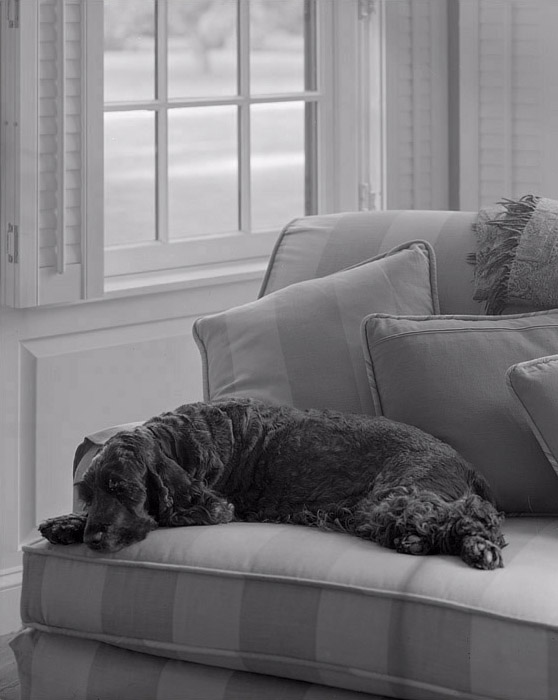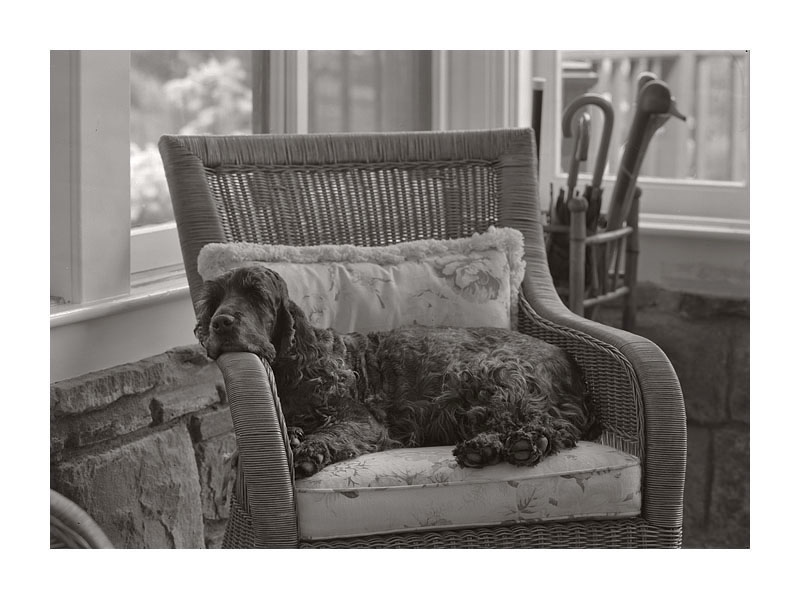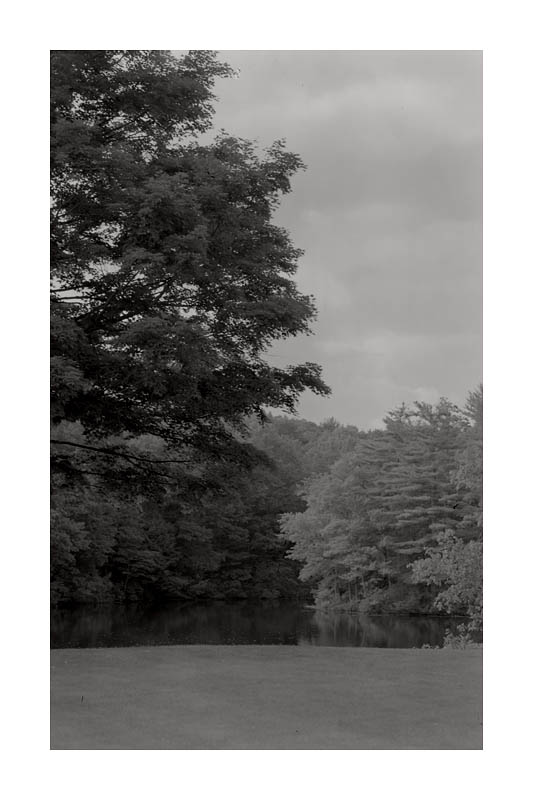Patrick
Sinar P, 300mm Fujinon A
5x7 HP5+, Divided Pyrocat HD
To render the scene inside the room, a 6-second exposure at f/16 was required. The darkest values on the jet-black dog, were actually too low for my light meter to measure. The scene outside the window - bright sunshine on foliage - fell on Zone 14.




 Reply With Quote
Reply With Quote




Bookmarks